CALCIUM LEVULINATE
Synonym(s):γ-Ketovaleric acid calcium salt;4-Oxopentanoic acid calcium salt;Calcium levulinate dihydrate;Levulinic acid calcium salt dihydrate
- CAS NO.:591-64-0
- Empirical Formula: C10H14CaO6
- Molecular Weight: 270.29
- MDL number: MFCD00045959
- EINECS: 209-725-9
- SAFETY DATA SHEET (SDS)
- Update Date: 2025-10-10 22:54:41
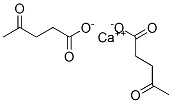
What is CALCIUM LEVULINATE?
Absorption
General calcium absorption occurs primarily in the duodenum by an active transcellular and saturable system, which is stimulated and regulated by 1,25(OH)2D,25 and through a passive and vitamin D-independent paracellular transport in the jejunum and ileum, and even in the colon - where absorption is only about 4% even when the intake is high . Ultimately, calcium absorption depends mainly on the amount of intake - in general, absorption increases at lower intakes and decreases at high intakes .
Readily accessible data regarding the specific absorption of calcium levulinate is not available although the formulation is considered a low molecular weight organic calcium ion type that is easily absorbed through the intestinal wall .
Toxicity
Overdosage with calcium resulting in excessively high levels of calcium in the blood known as hypercalcemia can cause renal insufficiency, vascular and soft tissue calcification, hypercalciuria, and kidney stones .
Chemical properties
White crystal or granular powder
The Uses of CALCIUM LEVULINATE
Calcium Levulinate is a salt of Levulinic Acid (L379500), derived from the degredation of cellulose and is a potential precursor to biofuels. Levulinic acid is also a photosensitizer for photodynamic therapy.
The Uses of CALCIUM LEVULINATE
Mineral supplement
Indications
This new application of calcium is intended for use as a food fortifier, to fortify foods like sauces, condiments, beer, beverages, soft drinks, milk and milk products, soy milk and soy products with calcium nutrition . Calcium levulinate can be used alone, or with calcium lactate, calcium chloride, and other compounds, either for pharmaceutical tablets, capsules, or injections preparation . In essence, calcium levulinate is ultimately a relatively new calcium supplementation option .
Background
The relatively new calcium levulinate is produced from a direct reaction between L- or levulinic acid levulose and calcium hydroxide . The resultant calcium levulinate formulation, when used as a calcium supplement, possesses a high calcium content that is observed to be 14.8% higher than the content typically found in calcium lactate . This formulation is considered a low molecular weight organic calcium ion type that is easily absorbed through the intestinal wall .
This new application of calcium is intended for use as a food fortifier, to fortify foods like sauces, condiments, beer, beverages, soft drinks, milk and milk products, soy milk and soy products with calcium nutrition . Calcium levulinate can be used alone, or with calcium lactate, calcium chloride, and other compounds, either for pharmaceutical tablets, capsules, or injections preparation .
Pharmacokinetics
The relatively new calcium levulinate is produced from a direct reaction between L- or levulinic acid levulose and calcium hydroxide . The resultant calcium levulinate formulation, when used as a calcium supplement, possesses a high calcium content that is observed to be 14.8% higher than the content typically found in calcium lactate . Moreover, this formulation also demonstrates a high solubility of more than 30% at 25℃ . Furthermore, the calcium levulinate is believed to be non-toxic and non-allergic, making it especially suitable for injection or infusion administrations . Additionally, this levulinate formulation is reported as having a good taste, little irritation with a pH value of 7, and good stability such that no precipitation or deterioration occurs during use . Finally, this calcium levulinate formulation is also believed to have good compatibility with calcium lactate, calcium chloride, and other material complexes which allows the formulation to also complex effectively with a diverse variety of foodstuffs and pharmaceutical dosage forms .
Metabolism
Although calcium levulinate dissociates into absorbable calcium ion once it is administered into the body, there have been studies to suggest that the levulinate component is metabolized to 4-hydroxypentanoate - a compound that has similar pharmacologic effects as but at a lower level of potency than the 'date rape' drug gamma-hydroxybutyrate .
Properties of CALCIUM LEVULINATE
| Melting point: | 123 °C |
| Water Solubility | almost transparency |
| Merck | 1679 |
| CAS DataBase Reference | 591-64-0(CAS DataBase Reference) |
| EPA Substance Registry System | Pentanoic acid, 4-oxo-, calcium salt (591-64-0) |
Safety information for CALCIUM LEVULINATE
| Signal word | Warning |
| Pictogram(s) |
 Exclamation Mark Irritant GHS07 |
| GHS Hazard Statements |
H315:Skin corrosion/irritation H319:Serious eye damage/eye irritation |
| Precautionary Statement Codes |
P280:Wear protective gloves/protective clothing/eye protection/face protection. P302+P352:IF ON SKIN: wash with plenty of soap and water. P305+P351+P338:IF IN EYES: Rinse cautiously with water for several minutes. Remove contact lenses, if present and easy to do. Continuerinsing. P332+P313:IF SKIN irritation occurs: Get medical advice/attention. P337+P313:IF eye irritation persists: Get medical advice/attention. |
Computed Descriptors for CALCIUM LEVULINATE
| InChIKey | APKDPOQXVKRLEP-UHFFFAOYSA-L |
CALCIUM LEVULINATE manufacturer
Livealth Biopharma Private Limited
New Products
4,4-Difluoropiperidine hydrochloride tert-butyl 9-methoxy-3-azaspiro[5.5]undecane-3-carboxylate Indole Methyl Resin N-Isopropylurea N,N-Dicyclohexylcarbodiimide(DCC) MELDRUMS ACID 5-METHYLISOXAZOLE-4-CARBOXYLIC ACID Magnessium Bis glycinate Zinc ascorbate 1-bromo-2-butyne 2-acetamidophenol 9(10H)-anthracenone Erythrosin B, 4-Piperidinopiperidine 2-((4-morpholinophenylamino) (methylthio) methylene) malononitrile 2,4-dihydroxybenzaldehyde 3-(4-morpholinophenylamino)-5-amino-1H-pyrazole-4-carbonitrile Methyl 2-methylquinoline-6-carboxylate 2,6-dichloro-4-nitropyridine 4-Bromo-2-chlorobenzonitrile 2-(benzylamino)acetic acid hydrochloride 4-(tert-Butoxycarbonylamino)but- 2-ynoic acid 3,4-dihydro-2H-benzo[b][1,4]dioxepine 1-Phenyl-1-cycloprppanecarboxylicacidRelated products of tetrahydrofuran
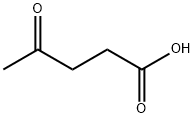


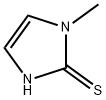


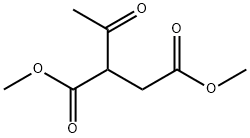
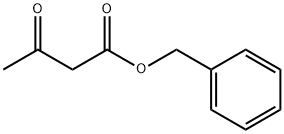
You may like
-
 Calcium levulinate dihydrate 98% CAS 591-64-0View Details
Calcium levulinate dihydrate 98% CAS 591-64-0View Details
591-64-0 -
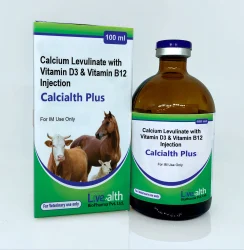 Calcium Levulinate with vitamin D3 & Vitamin B12View Details
Calcium Levulinate with vitamin D3 & Vitamin B12View Details
591-64-0 -
 Calcium Levulinate API MANUFACTURER INDIAView Details
Calcium Levulinate API MANUFACTURER INDIAView Details
591-64-0 -
 Crystals Calcium Levulinate, 25View Details
Crystals Calcium Levulinate, 25View Details
5743-49-7 -
 Calcium LevulinateView Details
Calcium LevulinateView Details
591-64-0 -
 Calcium Levulinate PowderView Details
Calcium Levulinate PowderView Details
591-64-0 -
 Calcium Levulinate, Packaging Size: StandardView Details
Calcium Levulinate, Packaging Size: StandardView Details
591-64-0 -
 CALCIUM LEVULINATEView Details
CALCIUM LEVULINATEView Details
591-64-0
